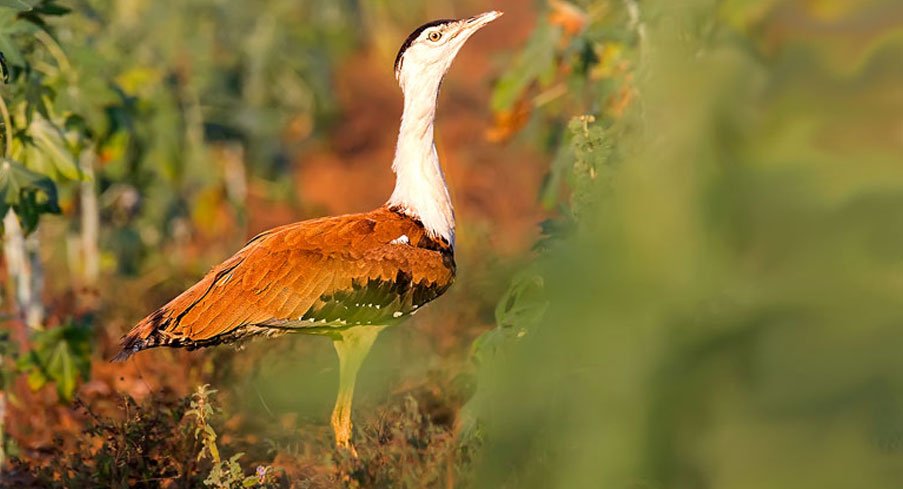The Supreme Court recently directed the Centre to come clean on its plans to save the critically endangered Great Indian Bustard.
About Great Indian Bustard:
- It is a bustard found on the Indian subcontinent.
- Scientific Name: Ardeotis nigriceps
- It is among the heaviest of the flying birds.
- Distribution: The species has a current viable population of 100- 150 individuals in India and mainly survives in the Thar Desert of Rajasthan that holds about 100 individuals.
- Habitat: It inhabits dry grasslands and scrublands.
- Features:
- It is a large bird with a horizontal body and long, bare legs, giving it an ostrich-like appearance.
- The sexes are roughly the same size, with the largest individuals weighing 15 kg (33 pounds).
- It can easily be distinguished by its black crown on the forehead, contrasting with the pale neck and head.
- The body is brownish, and the wings are marked with black, brown, and grey.
- They breed mostly during the monsoon season, when females lay a single egg on open ground.
- Lifespan: 12-15 years
- These birds are opportunistic eaters. Their diet ranges widely depending on the seasonal availability of food. They feed on grass seeds, insects like grasshoppers and beetles, and sometimes even small rodents and reptiles.
- Conservation Status:
- IUCN Red List: Critically Endangered
- Wildlife (Protection)Act, 1972: Schedule 1
- CITES: Appendix 1




